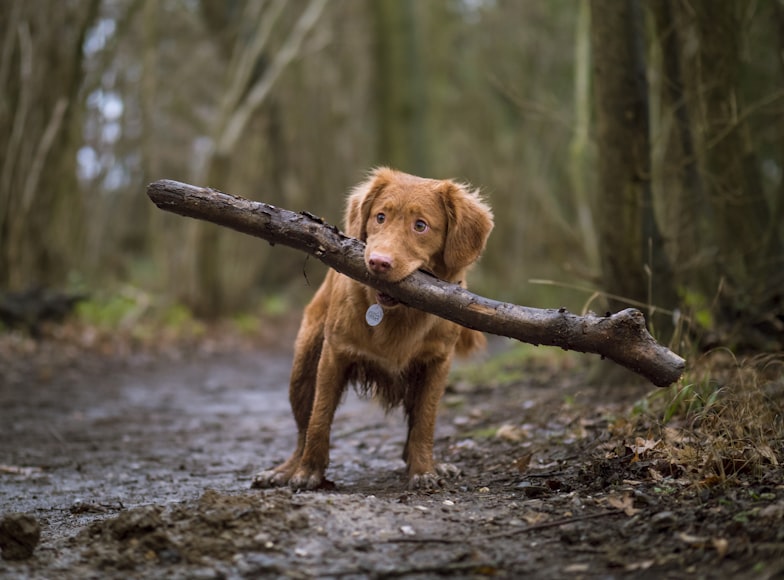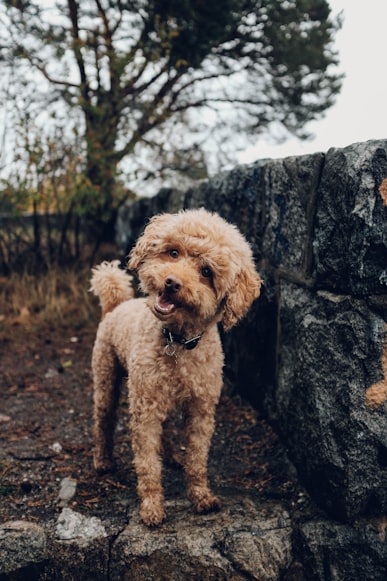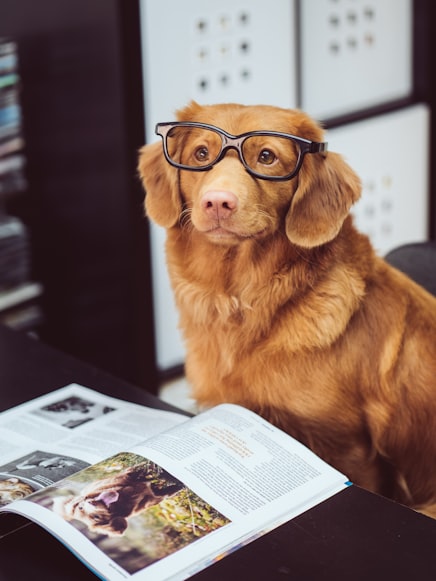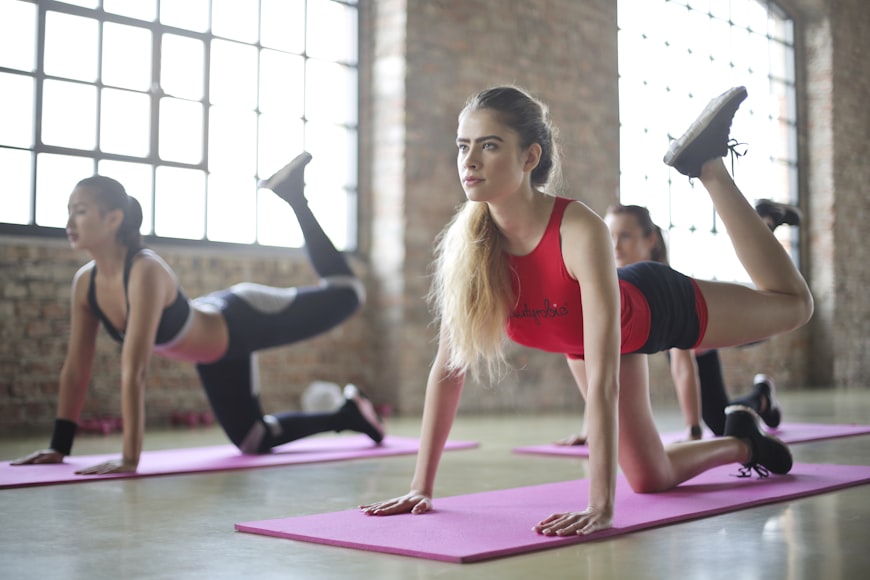Best Dog Training Techniques for Puppies

Training a puppy is an essential part of owning a dog. By starting early, you can help your puppy develop good habits and avoid behavioral problems down the road. Here are a few of the best dog training techniques for puppies:
Positive Reinforcement
Positive reinforcement is a training method that rewards your puppy for good behavior. This can be done with treats, praise, or affection. When your puppy does something you like, such as sitting or staying, give them a treat or some praise. This will help them to associate the desired behavior with something positive, and they will be more likely to repeat it in the future.
Clicker Training
Clicker training is a type of positive reinforcement training that uses a clicker to mark the exact moment your puppy does something you like. The clicker is a small device that makes a clicking sound when you press it. When your puppy hears the click, they know that they have done something right and will be rewarded. This can help you to train your puppy more quickly and efficiently.
Redirection
Redirection is a technique that you can use to stop your puppy from doing something you don’t like. For example, if your puppy is chewing on your furniture, you can redirect them to a chew toy. This will help them to learn what is appropriate to chew on and what is not.
Consistency
Consistency is key when it comes to training your puppy. Make sure that you are using the same commands and rewards every time you train your puppy. This will help them to learn what you expect of them and will make training more effective.
Patience
Training a puppy takes time and patience. Don’t get discouraged if your puppy doesn’t learn something right away. Just keep practicing and be consistent, and eventually, your puppy will get the hang of it.
Here are a few additional tips for training your puppy:
- Start training early. The sooner you start training your puppy, the easier it will be to instill good habits.
- Keep training sessions short and sweet. Puppies have short attention spans, so it’s best to keep training sessions to around 5-10 minutes at a time.
- Make training fun. Puppies love to play, so make training sessions fun and enjoyable for them.
- Be consistent with your commands and rewards. This will help your puppy to learn what you expect of them.
- Be patient. Training a puppy takes time and patience. Don’t get discouraged if your puppy doesn’t learn something right away. Just keep practicing and be consistent, and eventually, your puppy will get the hang of it.
Establish Clear Communication:

Training a puppy is an exciting and rewarding journey. By starting with positive reinforcement and clear communication, you can foster a strong bond while teaching your furry friend the essential skills they need.
1. Establish Clear Communication:
Your puppy needs to understand what you want them to do. To achieve this, follow these steps:
- Consistent commands and hand signals: Choose unambiguous commands (e.g., “sit,” “stay,” “come”) and stick to them. Use hand signals to reinforce your verbal cues.
- Reward desired behaviors: When your puppy obeys a command, reward them with treats, praise, or a game of fetch. This reinforces the positive behavior and encourages them to repeat it.
- Avoid punishment: Punishment can damage the bond between you and your puppy, instill fear, and hinder learning. Instead, use positive reinforcement to encourage good behavior.
2. House Training:
Potty training is crucial for a well-behaved puppy. Establish a designated potty area and take them there frequently, especially after meals, naps, and play sessions.
- Praise and reward: Praise your puppy when they go potty in the right spot. Consistency and patience are key in establishing this routine.
- Avoid accidents: If an accident occurs, clean it up without scolding your puppy. Simply take them to their designated potty area.
3. Leash Training:
Leash training gives you control over your puppy and ensures their safety. Start by practicing indoors in a safe environment before venturing outdoors.
- Positive reinforcement: Reward your puppy for walking calmly on the leash. Use treats or praise as motivation.
- Loose leash walking: Teach your puppy to walk beside you without pulling or lagging behind. Gently correct any pulling with a verbal cue, such as “heel.”
4. Basic Obedience Commands:
Basic obedience commands provide structure and discipline for your puppy. Start with simple commands and gradually increase the complexity.
- Sit: Hold a treat above your puppy’s head and gently push down on their rear. As they sit, say “sit” and reward them.
- Stay: Once your puppy knows “sit,” add a “stay” command. Say “stay” and hold your hand out. Reward your puppy for remaining in that position.
- Come: When your puppy is on a leash, call their name and say “come.” As they approach you, reward them.
5. Socialization:
Socialization exposes your puppy to different people, animals, and environments. This helps them develop confidence and prevents fear or aggression later in life.
- Puppy classes: Puppy classes are an excellent opportunity for socialization and training. They provide a safe and controlled environment for your puppy to interact with other dogs and people.
- Dog parks: Visit dog parks where your puppy can play and interact with other dogs in a supervised setting.
By following these best practices, you can create a strong bond with your puppy while teaching them the essential skills they need to live a happy and well-behaved life. Remember, consistency, patience, and positive reinforcement are the keys to successful puppy training.
Start Training Early:

Start Training Early:
Puppies have a heightened capacity for learning during the socialization period, which typically occurs between 8 and 16 weeks of age. This is the optimal time to initiate training, as puppies are more receptive to new information and commands. Starting early allows you to establish a foundation of good behavior that will last a lifetime.
Basic Commands:
Begin training with fundamental commands such as sit, stay, come, and down. These commands provide the basis for all future training and are essential for effectively communicating with your puppy.
Positive Reinforcement:
Positive reinforcement is the most effective method of dog training. When your puppy follows a command correctly, reward them with something they enjoy, such as treats, praise, or playtime. This creates a positive association with the desired behavior, encouraging them to repeat it.
Consistency is Key:
Consistency is paramount in dog training. Use the same commands, hand signals, and rewards every time you train your puppy. This helps them understand what you expect from them and builds a bond based on trust and clarity.
Short and Sweet:
Training sessions should be brief and enjoyable. Start with a few minutes at a time and gradually increase the duration as your puppy’s attention span improves. Keep the training fun and engaging, avoiding repetition that could lead to boredom.
Patience and Repetition:
Dog training takes time and patience. Don’t get discouraged if your puppy doesn’t grasp a command immediately. Be patient, repeat the training regularly, and break down complex commands into smaller steps.
Avoid Punishment:
Negative reinforcement, such as punishment or harsh corrections, can damage the bond between you and your puppy and hinder their learning process. Instead, focus on positive reinforcement and redirecting your puppy’s unwanted behaviors in a constructive manner.
Socialization:
Socialization is crucial for well-adjusted puppies. Exposing them to different environments, people, and situations helps them become confident and comfortable in various settings.
Professional Help:
If you encounter any difficulties in training your puppy, don’t hesitate to seek professional help from a certified dog trainer. They can provide personalized guidance and support to ensure a successful training experience for both you and your furry friend.
Use Positive Reinforcement:

Training your puppy is an essential part of being a responsible pet owner. By implementing effective training techniques from a young age, you can establish a strong foundation for a well-behaved and happy canine companion. Here are some tried-and-tested methods that prioritize positive reinforcement and a bond-building approach:
1. Crate Training:
- Crates provide a safe and comfortable space for your puppy, helping them feel secure and less anxious.
- Start by gradually introducing your puppy to the crate with treats and comfortable bedding.
- Gradually increase the time spent in the crate, rewarding them for calm behavior.
2. Housebreaking:
- Establish regular potty breaks and take your puppy outside frequently to a designated potty spot.
- Reward your puppy for going potty in the right place, using treats or praise.
- Clean up any accidents thoroughly to prevent your puppy from associating the area with going potty.
3. Socialization:
- Expose your puppy to a variety of people, places, and experiences to build their confidence and prevent fear or aggression.
- Supervise interactions and reward your puppy for calm and friendly behavior.
- Socializing your puppy early on is crucial for their overall well-being.
4. Basic Obedience Commands:
- Start with simple commands such as “sit,” “stay,” and “come.”
- Use positive reinforcement and high-value treats to reward your puppy for following the commands.
- Practice regularly in short sessions, keeping it fun and rewarding.
5. Leash Training:
- Leash training is essential for controlling your puppy in public areas.
- Start by walking your puppy on a short leash in a quiet environment.
- Gradually introduce distractions and reward your puppy for walking calmly by your side.
6. Chew Toy Training:
- Provide your puppy with appropriate chew toys to satisfy their natural chewing instincts.
- Redirect your puppy to the chew toy if they start chewing on inappropriate objects.
- Reward them for chewing on their toys to reinforce this behavior.
7. Use Positive Reinforcement:
- Rewarding good behaviors strengthens the desired action.
- Use high-value treats, praise, or games as rewards.
- Avoid negative reinforcement, such as scolding or hitting, as this can damage your bond with your puppy and hinder their training progress.
Conclusion:
By following these best practices in dog training, you can lay the foundation for a happy, well-behaved, and obedient companion. Remember to be patient, consistent, and use positive reinforcement to create a positive and rewarding training experience for both you and your puppy.
Establish a Daily Routine:

As a puppy owner, establishing a daily routine is crucial for your furry friend’s development and well-being. Consistency provides structure and predictability, which helps puppies learn and behave appropriately. Here are the benefits of establishing a daily routine:
-
Reduces Anxiety: Puppies crave routine, and a predictable schedule helps them feel secure and reduces anxiety.
-
Promotes Good Behavior: By creating a consistent routine, puppies learn what is expected of them at specific times of the day, reducing the likelihood of disruptive behaviors.
-
Facilitates Training: A consistent routine makes it easier for puppies to learn new commands and develop good habits.
-
Supports Physical and Mental Health: Regular feeding, sleeping, and exercise times ensure that your puppy’s physical and mental needs are met.
How to Establish a Daily Routine:
-
Feeding Schedule: Feed your puppy twice a day, at the same time each day. This helps regulate their digestive system and prevents overfeeding.
-
Sleeping Schedule: Provide a designated sleeping area and stick to a regular sleep schedule. This allows your puppy to develop a healthy sleep-wake cycle.
-
Exercise Schedule: Puppies require regular exercise for physical and mental stimulation. Plan short exercise sessions throughout the day, gradually increasing their duration and intensity as they grow.
-
Potty Breaks: Take your puppy out for frequent potty breaks at designated times. This helps them learn to control their bladder and bowels and prevents accidents.
-
Training Sessions: Set aside short daily training sessions to teach your puppy basic commands, such as “sit,” “stay,” and “come.” Keep these sessions brief and positive.
Tips for Success:
-
Be Consistent: Stick to the routine as much as possible, even on weekends.
-
Start Early: Establish a routine from the moment you bring your puppy home.
-
Be Patient: It takes time for puppies to learn and adjust to a routine.
-
Observe Your Puppy: Pay attention to your puppy’s body language and behavior to determine if the routine is working for them. Make adjustments as needed.
-
Avoid Punishment: Never punish your puppy for not following the routine. Use positive reinforcement and redirection to encourage desired behaviors.
By establishing a daily routine, you provide your puppy with the structure and guidance they need to thrive. With consistency and patience, you can help your furry friend develop good habits and become a well-behaved member of your family.
Use Crate Training:
Welcoming a new puppy into your home is an exciting and rewarding experience. However, it’s essential to equip yourself with the appropriate training techniques to ensure a well-behaved and happy canine companion. Here are some of the most effective dog training techniques specifically tailored for puppies:
Crate Training
A crate provides a safe and secure space for puppies during various situations:
- Housebreaking: Puppies naturally avoid eliminating in their sleeping area, so crate training aids in housetraining by limiting their access to other spaces.
- Separation Anxiety: When puppies are left alone in a crate, it helps reduce separation anxiety by providing a familiar and comforting environment.
- Calmness: Crates encourage puppies to be calm and relaxed, as they learn to associate the crate with safety and security.
Positive Reinforcement
Positive reinforcement is a highly effective training technique that involves rewarding desired behaviors with treats, praise, or play. By consistently rewarding puppies for following commands or displaying good manners, you encourage them to repeat those behaviors in the future.
Clicker Training
Clicker training uses a clicker device to mark the exact moment a puppy performs a desired behavior. This precise timing helps puppies understand what they are being rewarded for and accelerates the learning process.
Socialization
Socialization is crucial for puppies to become well-rounded and confident dogs. Exposing them to a variety of people, places, and situations from a young age helps build their social skills and prevents them from developing fear or aggression towards others.
Leash Training
Leash training is essential for teaching puppies how to walk calmly and confidently on a leash. Start by walking them indoors with a short leash to practice following commands, then gradually transition to outdoor walks in controlled environments.
Potty Training
Potty training involves establishing a consistent routine for taking puppies outside to eliminate. Choose a designated potty spot and take them there frequently, especially after meals, naps, or play sessions. Praise and reward them for eliminating in the appropriate area.
Patience and Consistency
Training puppies requires patience, consistency, and a positive attitude. Avoid using punishment or harsh methods, as this can damage the bond between you and your puppy. Instead, focus on providing clear commands, setting realistic goals, and rewarding progress.
Remember, every puppy is different, and what works for one may not work for another. Experiment with various techniques to find the ones that best suit your puppy’s personality and learning style. With consistency, positive reinforcement, and a lot of love, you can raise a happy, well-behaved companion that will bring you years of joy.
Socialization:
Introduction:
Socialization is a crucial aspect of puppy training that lays the foundation for a happy and well-behaved canine companion. By exposing puppies to various people, animals, and environments, we help them develop confidence, reduce fear, and prevent aggression.
Why Socialization is Important:
Puppies naturally experience a fear period between 8 and 12 weeks of age, during which they are particularly sensitive to new and unfamiliar experiences. Proper socialization helps mitigate this fear and allows puppies to develop into dogs who are comfortable and confident in all situations.
Best Socialization Techniques:
1. Early Exposure:
Begin socializing puppies as early as 8 weeks of age, when they are most receptive to new experiences. Limit their exposure to only safe and positive environments initially.
2. Gradual Increase in Intensity:
Gradually increase the intensity and complexity of socialization experiences. Start with brief interactions with known and trusted individuals, and gradually expose them to more unfamiliar people, animals, and situations.
3. Positive Reinforcement:
Always reward puppies for good behavior during socialization. Use treats, praise, or toys to positively reinforce desired responses. This will help build their confidence and encourage further positive interactions.
4. Structured Play Groups:
Enroll puppies in structured play groups with other dogs of similar age and temperament. This allows them to learn proper canine social etiquette and develop healthy play behaviors.
5. Leash Training:
Practice leash training in public areas where puppies can encounter various distractions. This helps them learn to focus on you and control their impulses in social situations.
6. Daily Exploration:
Provide plenty of opportunities for your puppy to explore different environments, such as parks, dog-friendly stores, and pet-friendly gatherings. Exposing them to various sights, sounds, and smells helps desensitize them to normal everyday occurrences.
7. Handling and Grooming:
Handle your puppy regularly and get them used to being touched all over their body. This will help them feel comfortable with grooming, veterinary exams, and other necessary routines.
Conclusion:
Socialization is an essential element of puppy training that plays a vital role in shaping a well-adjusted and confident canine companion. By following these techniques, you can provide your puppy with the experiences and interactions they need to thrive in all aspects of life. Remember to socialize early, gradually, and always reward positive behavior. With consistent effort, your puppy will grow into a happy, sociable, and well-rounded member of your family.
Exercise:
Exercise plays a crucial role in the overall well-being and training of your puppy. Regular physical activity not only promotes their physical and mental health but also helps curb destructive behaviors.
Benefits of Exercise for Puppies:
- Improved physical health: Exercise strengthens muscles, bones, and joints, reducing the risk of obesity and other health problems.
- Enhanced mental health: Exercise releases endorphins, which have mood-boosting effects and reduce anxiety.
- Reduced destructive behaviors: When puppies have ample opportunities to expend their energy through exercise, they are less likely to engage in destructive behaviors out of boredom or frustration.
Types and Amount of Exercise:
The amount and type of exercise appropriate for your puppy will vary depending on their age and breed. Here are some guidelines:
- Young Puppies (8-12 weeks): Start with short, supervised play sessions of 15-20 minutes, gradually increasing as they grow. Avoid strenuous activities or long walks that could damage their developing joints.
- Adolescent Puppies (4-6 months): Increase exercise to 30-45 minutes, two to three times a day. Introduce new activities like short walks, fetch, and agility drills.
- Adult Puppies (6 months and older): Aim for a minimum of 60 minutes of moderate to vigorous exercise each day. This could include longer walks, runs, swims, or playing in the park.
Types of Exercise:
- Walks: This is a great way for puppies to explore their surroundings, socialize, and get a low-impact workout.
- Fetch: This classic game is not only fun but also helps improve coordination and recall.
- Agility drills: These exercises involve obstacles and jumps, promoting physical fitness and mental stimulation.
- Swimming: Swimming is an excellent full-body workout that is also low-impact, making it suitable for puppies of all ages.
Remember to adjust the intensity and duration of exercise based on your puppy’s individual needs. Overexertion can lead to injuries or exhaustion. Always consult with a veterinarian if you have any concerns about your puppy’s fitness level.
In addition to physical activity, mental exercises like training and socialization are also important for your puppy’s development. By providing a balanced approach that includes regular exercise, you can help your puppy live a happy, healthy, and well-behaved life.
Patience and Consistency:
Welcoming a puppy into your home is an exciting time, but it also comes with the responsibility of training your furry friend. One of the most crucial elements of effective dog training is patience and consistency. Here’s a detailed explanation of why these qualities are essential for successful puppy training:
Patience:
- Training Takes Time: Remember that puppies are still developing their cognitive and motor skills. Learning new commands and behaviors requires repetition and reinforcement over an extended period.
- Avoid Frustration: Getting frustrated or impatient with your puppy’s progress can hinder their learning. Stay calm and positive throughout the training process.
- Set Realistic Goals: Don’t expect your puppy to master all commands overnight. Break down training into small, manageable steps and celebrate their progress along the way.
Consistency:
- Repeat Commands and Routines: Repetition is key to successful training. Repeat commands and routines consistently to ensure your puppy understands what you expect.
- Use Clear and Concise Cues: When giving commands, use short, clear words or hand gestures that your puppy can easily understand.
- Maintain a Consistent Schedule: Establish a regular routine for your puppy’s meals, potty breaks, and training sessions. Consistency helps them learn what to expect and makes it easier for them to follow commands.
- Avoid Overcorrecting: If your puppy makes a mistake, don’t punish them severely. Instead, gently redirect them and repeat the desired command. Overcorrection can damage your relationship and make it harder for your puppy to learn.
Benefits of Patience and Consistency:
- Increased Understanding: A patient and consistent approach allows your puppy to better understand your commands and expectations.
- Enhanced Bond: Positive reinforcement and a calm training environment help strengthen the bond between you and your puppy.
- Reduced Behavior Problems: Patience and consistency lead to proper socialization and obedience, reducing the likelihood of behavioral problems in the future.
- Greater Success: With patience and consistency, you can ensure that your puppy develops into a well-behaved and happy companion.
Remember, training a puppy is a process that requires patience, consistency, and positive reinforcement. By adhering to these principles, you can establish a strong foundation for your puppy’s development and create a harmonious relationship that will last for years to come.















